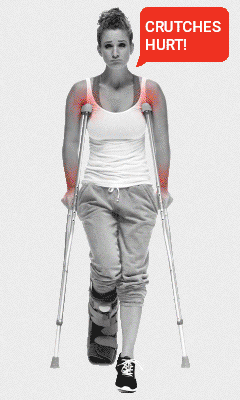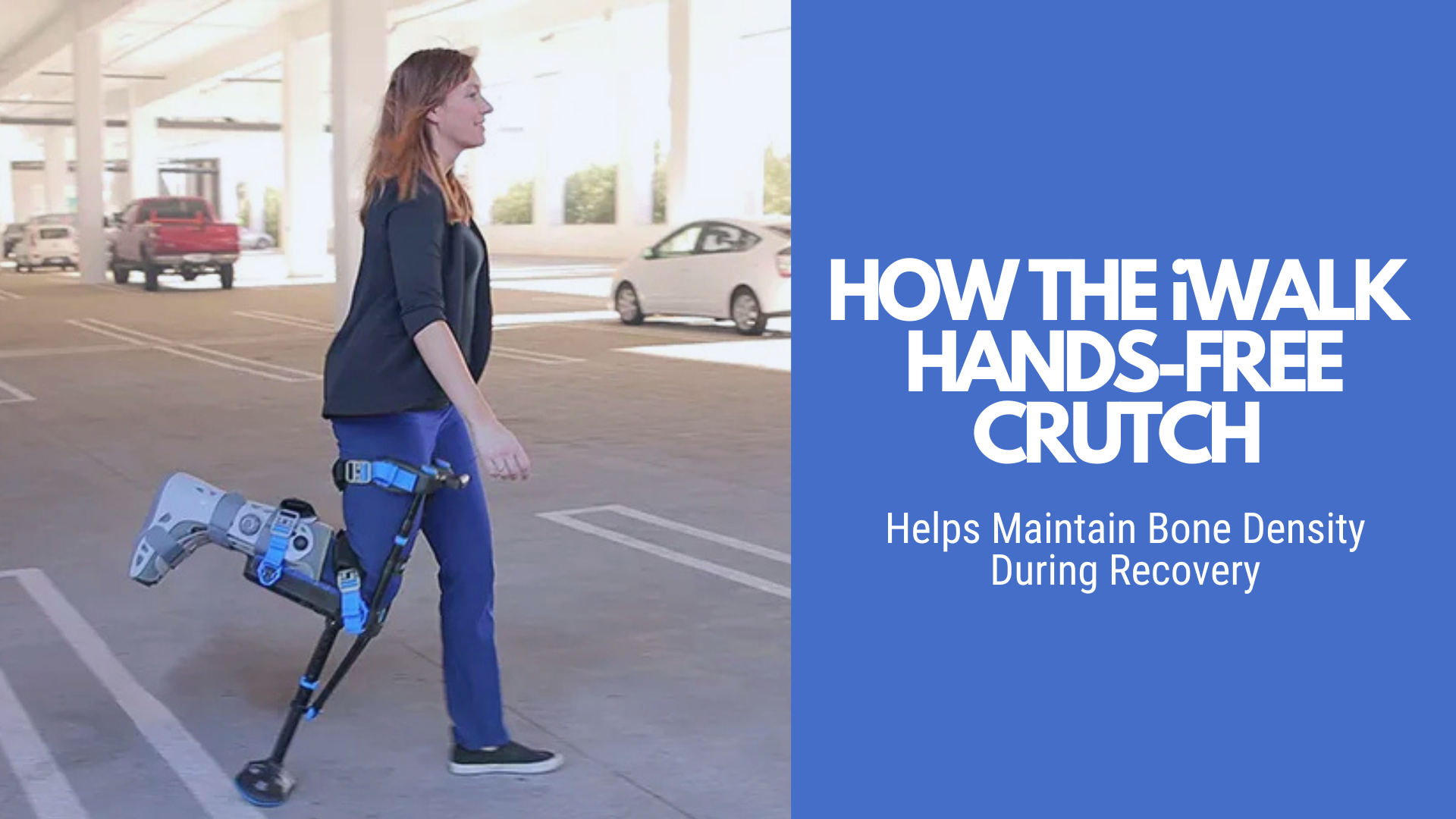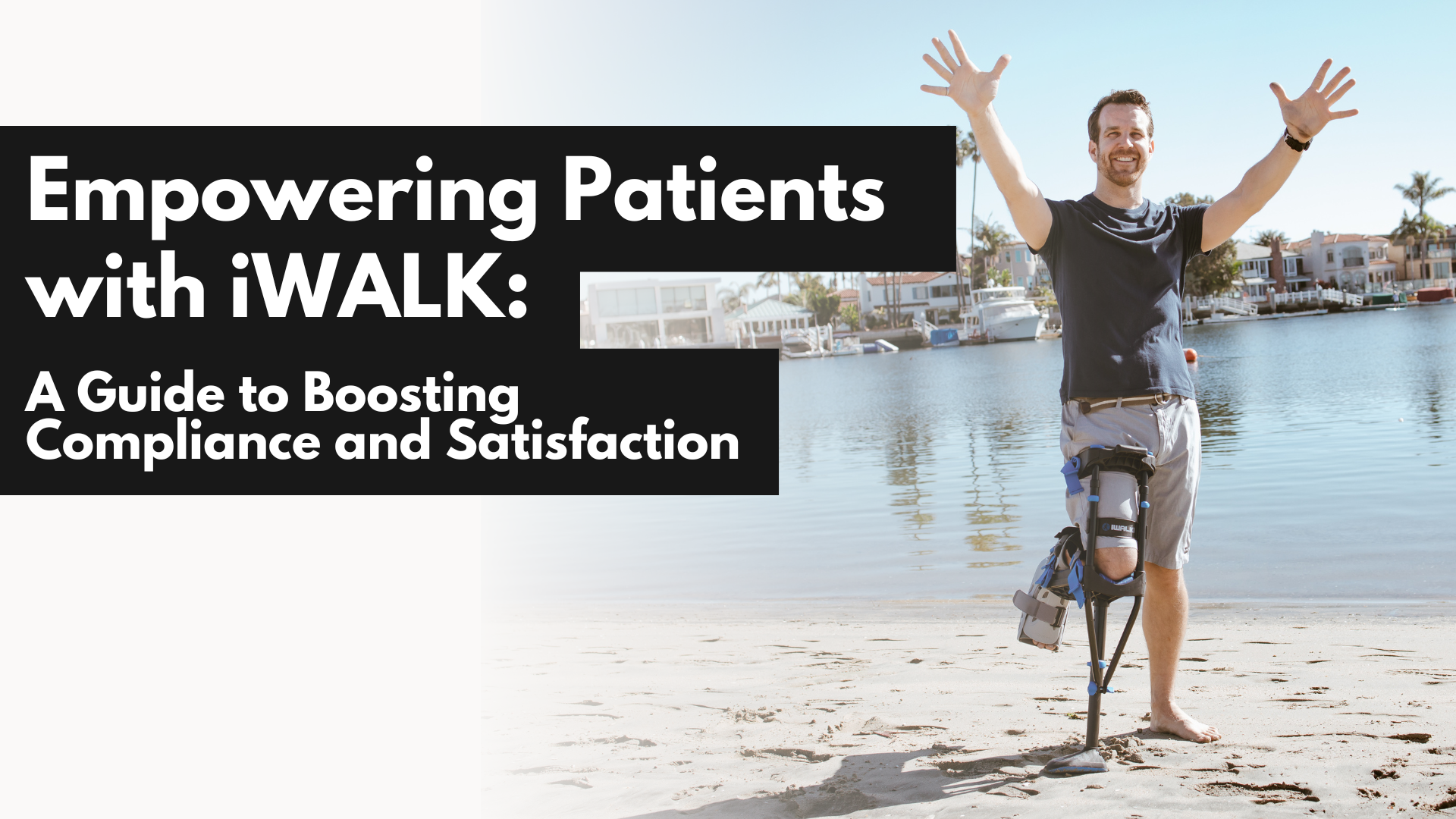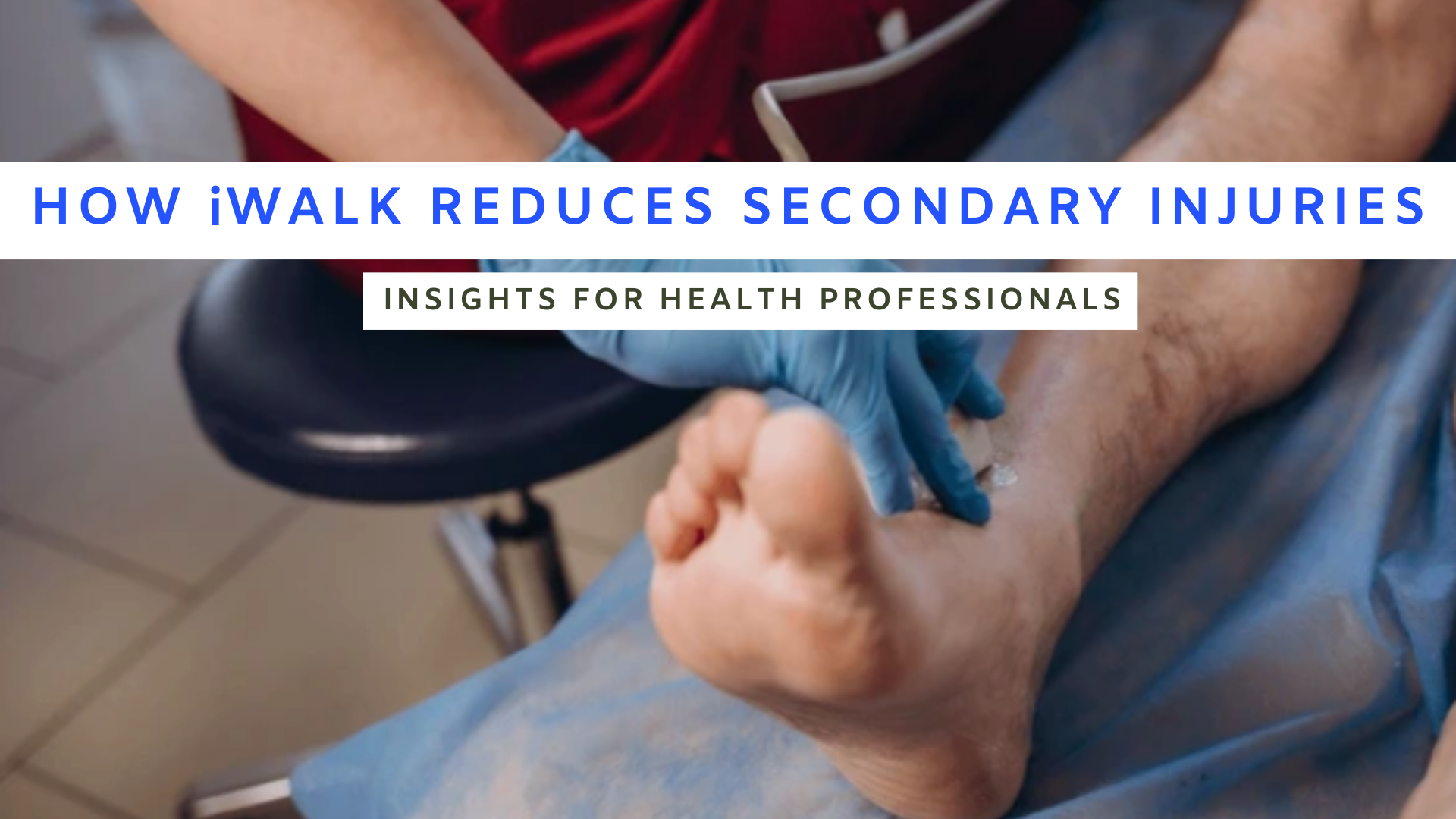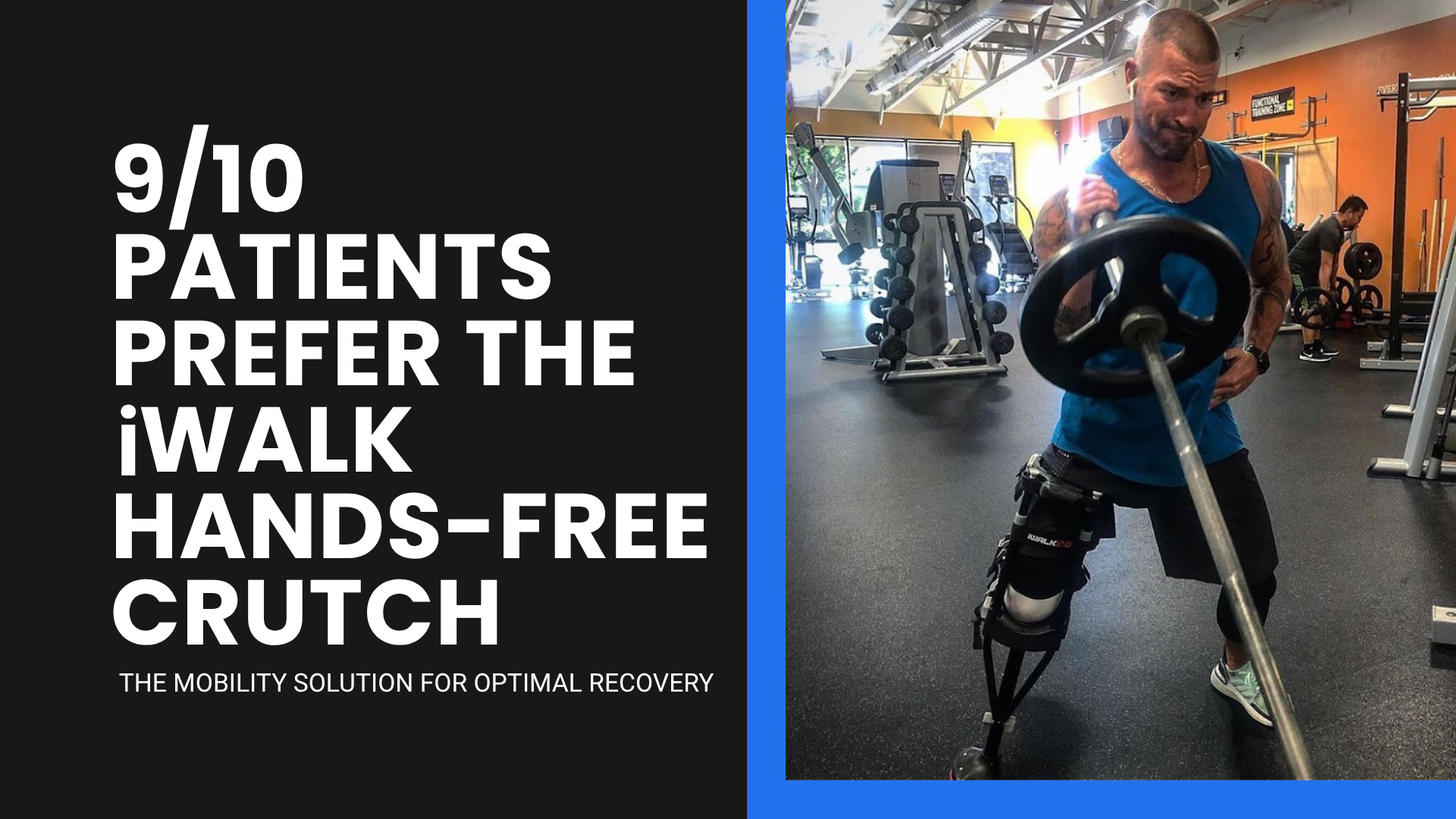For physicians managing patients with lower limb injuries, maintaining musculoskeletal health during recovery is often an uphill battle. Non-weight bearing protocols, while necessary for proper healing—can lead to a cascade of complications, including muscle atrophy, reduced bone density, and diminished venous return. These challenges are not theoretical. In fact, research has long demonstrated the adverse physiological effects of disuse, with Booth and Gollnick observing structural and functional degradation of skeletal muscle under inactivity as early as 1983¹. Fortunately, the iWALK hands-free crutch offers a progressive alternative that supports muscle use, promotes partial weight-bearing, and may lead to improved patient adherence and outcomes.
A Clinically Supported Solution
Unlike axillary crutches and knee scooters, which require complete offloading of the injured leg, the iWALK enables upright, hands-free ambulation while still complying with non-weight bearing restrictions. This unique configuration allows for a more physiological gait and activates muscle groups typically underused during traditional recovery. A 2022 study confirmed that patients using the iWALK experienced significantly less muscle atrophy than those relying on conventional non-weight-bearing devices². This is critical not only for muscle preservation but also for maintaining metabolic activity and reducing rehabilitation time post-immobilization.
Moreover, studies measuring popliteal blood flow show the iWALK facilitates superior venous return compared to both axillary crutches and knee scooters, helping to mitigate risks like edema and deep vein thrombosis³. When it comes to patient energy expenditure and perceived exertion, the hands-free crutch also outperforms other devices by offering a more balanced energy demand and lower levels of fatigue—important factors in improving compliance and maintaining patient mobility during prolonged recovery⁴.
Improving Patient Adherence and Satisfaction
One of the most cited issues in post-operative care is patient non-compliance with non-weight bearing instructions. A 2016 study revealed a high rate of non-adherence, often due to discomfort, difficulty managing daily activities, or frustration with standard crutches⁵. The iWALK addresses these issues by restoring functional independence—allowing patients to perform everyday tasks like cooking, grooming, or caring for children without compromising their recovery plan.
As a result, recommending the iWALK may lead to better patient morale, greater adherence to non-weight bearing protocols, and ultimately, improved recovery outcomes. It empowers patients to remain active, confident, and engaged in their healing journey.
Conclusion
For doctors and physicians seeking to elevate patient care during lower limb injury recovery, the iWALK hands-free crutch presents a clinically supported, patient-preferred solution. By maintaining muscle activation, improving blood flow, and enhancing compliance, this innovative mobility device supports better healing outcomes and long-term musculoskeletal health.
References
Booth, F. W., & Gollnick, P. D. (1983). Effects of disuse on the structure and function of skeletal muscle. Med Sci Sports Exerc, 15(5), 415–420.
Altinkaynak, E. (2022). Hands-Free Crutch Reduces the Muscle Atrophy Attributed to Non-Weight Bearing Injuries. https://doi.org/10.31219/osf.io/qac95
Bradley, A. P., Roehl, A. S., McGrath, R., Smith, J., & Hackney, K. J. (2022). Popliteal Blood Flow With Lower-Extremity Injury Mobility Devices. Foot Ankle Orthop, 7(4), 24730114221142784. https://doi.org/10.1177/24730114221142784
Canter, D. J., Reidy, P. T., Finucan, T., & Timmerman, K. L. (2023). A comparison of energy expenditure and perceived exertion between standard axillary crutches, knee scooters, and a hands-free crutch. PM R. https://doi.org/10.1002/pmrj.13109
Chiodo, C. P., Macaulay, A. A., Palms, D. A., Smith, J. T., & Bluman, E. M. (2016). Patient compliance with postoperative lower-extremity non-weight-bearing restrictions. JBJS, 98(18), 1563–1567.


